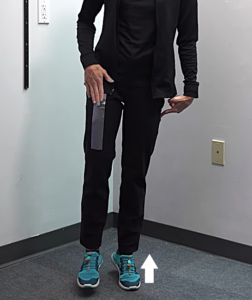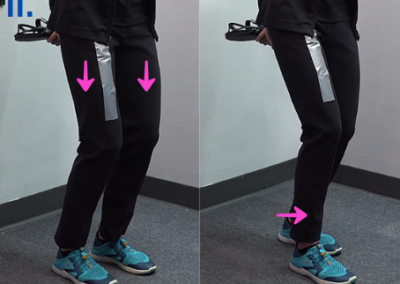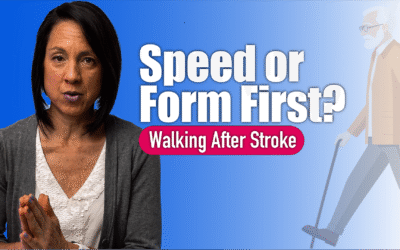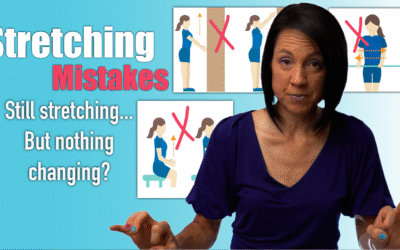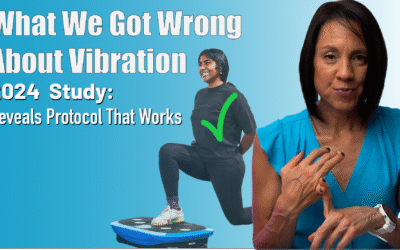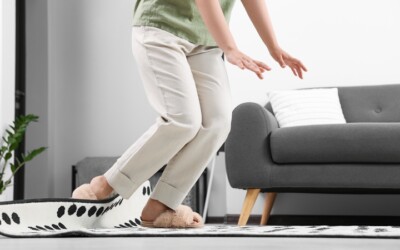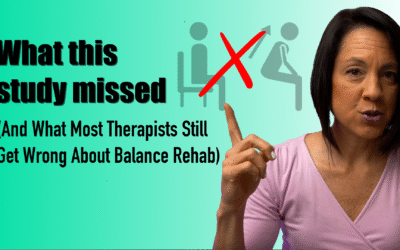How to Stop Vaulting and Walk More Naturally After a Stroke
If you’ve ever noticed yourself pushing up on your stronger leg to swing your weaker leg forward while walking, you may be experiencing vaulting.
The good news? Vaulting can be unlearned with the right strategies.
In this post, we’ll explain what causes vaulting, why it happens, and the simple exercises you can do every day to improve your walking pattern.
What is Vaulting?
Vaulting happens when you rise up on your uninvolved leg to help swing your involved leg through. It may seem like a quick fix, but it actually increases energy use, imbalance, and joint strain, making walking more tiring and less stable.
Vaulting is a learned habit, meaning with consistent training and adjustments, you can retrain your body to walk more naturally.
Why Does Vaulting Happen?
There are several reasons why you might develop a vaulting gait pattern:
1. Your leg is longer or your brain is perceiving it as longer
If your brain perceives your involved leg as longer or it is physically longer, you may vault to help clear the foot.
Possible Causes: If your AFO (brace) is pointing downward or your calf muscles are tight, your foot might not clear the ground properly, making it feel like your leg is longer.
Treatment:
✔️ Adjust your AFO by removing the heel wedge at the bottom of your brace.
✔️ Raise the other shoe by wearing one with a slightly thicker sole.
✔️ Stretch your ankle regularly to improve flexibility and movement.
2. Spasticity
If your quadriceps (thigh muscles) are tight, your knee may stay locked straight, making it hard to swing your leg forward normally.
Treatment:
✔️Work on stretching and relaxing tight muscles to allow for better movement.
3. Your Brain Won’t Let Your Leg Bend (Inability to Dissociate)
This happens when legs are unable to perform different movements at the same time.
For example:
- When you’re standing on one leg, the other leg won’t bend as it should.
- If you try to bend one leg, the opposite leg may bend too, instead of moving separately.
Sometimes, when you stand on one leg, your brain doesn’t allow the other leg to bend out of fear it will buckle. Instead, it keeps both legs straight, making walking harder.
Treatment:
✔️ Balance exercises and movement retraining can help correct this pattern.
4. Weakness in Hip flexors
If your hip flexors are weak, you may not have enough strength to lift your leg forward without compensating.
Treatment:
✔️Strengthening exercises to improve hip flexor activation.
How to Fix Vaulting – 3 Simple Exercises
The key to breaking the habit of vaulting is consistent practice. Here are three exercises to help you retrain your gait:
1️⃣Even-Up Shoe
– Wearing a slightly thicker sole on the other foot can help make walking feel more balanced, so you won’t feel the need to push up on your toes.
2️⃣Crouch Walking
– Walk with slightly bent knees while keeping your hands behind your back, and take small steps. This encourages proper movement and prevents vaulting.
- Try to keep your hands behind your back.
- Bend both knees.
- Take small steps.
3️⃣Resistance Band Hip Flexion 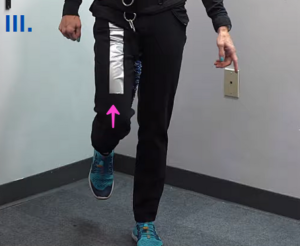
– Use a resistance band to help lift your knee and hip repeatedly. This strengthens the muscles needed to clear your foot properly.
Conclusion
Vaulting may feel like a natural way to get your leg through when walking, but over time, it can lead to inefficiency, imbalance, and extra fatigue. The good news? With simple daily exercises and adjustments, you can retrain your brain and body to move more naturally.
Recovery takes patience and consistency, but every small change brings you one step closer to better, smoother walking. Stay patient, keep practicing, and trust the process—you’re making progress with every step!
Articles you may be interested in
Is Your Neuro Rehab Helping Your Recovery, or Making Things Worse?
The Real Impact of Neuro Rehab on Recovery https://youtu.be/YDgQc4p_atE Recovering after a stroke often involves long hours of rehabilitation. Neuro rehab programs are designed to retrain the brain and body, helping survivors regain independence. Understanding...
How Short Bursts of Exercise Boost Brain Healing
HIIT for Stroke Recovery Boost brain rewiring, improve movement, and speed recovery with short bursts of exercise. https://youtu.be/4SgXN2uRX8g If you’ve been on your stroke recovery journey for a while, you’ve probably heard the word neuroplasticity. Neuroplasticity...
Stretching Spastic Muscles: 8 Mistakes to Avoid
8 Common Stretching Mistakes in Stroke Recovery Why Your Stretching Might Be Making Spasticity Worse https://youtu.be/bBsM34HROYY If you’re dealing with spasticity after a neurologic injury, stretching might not be as straightforward as it seems. In fact, doing it the...
New Study: Vibration Plates Boost Balance After Stroke
It Just Vibrates… So Why Are Stroke Survivors Getting Better? The Truth Behind the Research https://youtu.be/GZgGsMjEgJQ When vibration plates first became popular, they reminded many of us of those old 1980s machines that promised to "shake" the fat away. Naturally,...
Walking “Tips” that Sabotage Post-Stroke Progress
Recovering from Stroke? Don’t Let These 7 Walking Mistakes Set You Back Better Walking Starts by Avoiding These Mistakes https://youtu.be/_nkjHLdOeLc Recovering your walking ability after a stroke is an incredible accomplishment. You’ve put in the work. Strengthening...
The Hidden Reason Your Walking Feels Off After Stroke Rehab
The Missing Link in Stroke Rehab: Why Strength Isn’t Enough How Plyometric Exercises Can Improve Your Post-Stroke Walking https://youtu.be/0xzcgTifCiM Recovering from a stroke is a journey that takes patience, effort, and persistence. Maybe you’ve been faithfully...
Struggling with Shoulder Pain After a Stroke? Here’s What Works
Why Does My Shoulder Hurt After a Stroke?Understanding the 6 Most Common Causes and What You Can Actually Do About Them Let’s be real — if you’re recovering from a stroke and your shoulder still hurts, it can feel really defeating. Especially if you’ve been doing “all...
Still Feeling Weak After Stroke? This Might Be Why
Doing the exercises… but still not getting stronger?You’re walking. You’re moving. Maybe even getting stronger.But everything still feels hard. Like walking across a room takes full concentration. Or standing up while talking feels like solving rocket science....
Stroke Recovery: Spasticity vs. Adaptive Shortening vs. Contracture
Stroke Recovery: Spasticity vs. Adaptive Shortening vs. Contracture Muscle tightness after stroke is common and can be the greatest barrier to restoring normal arm and leg movement. But not all tightness is the same. To treat it effectively, you need to understand...
Stages of Motor Learning Post Stroke
Why Everything Feels So Hard (and What That Actually Means for Your Recovery) If you have ever said: “Why is this so hard?” “I could do this yesterday—why not today?” “Why can’t I remember how to move?” You are not alone. If you’ve had a stroke and you're in rehab,...


